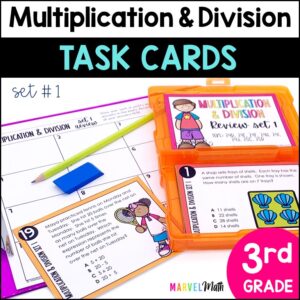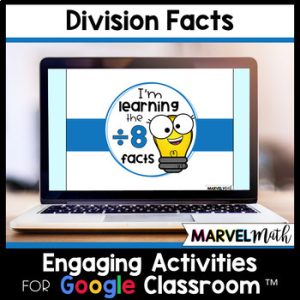Description
Your students will love the FUN & Engaging activities to help them learn Division! This resource includes a Video Lesson and Easy-to-Use Google Slides activities that are Perfect for Distance Learning. This resource is designed for 3rd grade students and aligns to these standards: TEKS 3.4H and CCSS 3.OA.A.2
You may also be interested in these lessons on Perimeter & Area:
- 3rd Grade Perimeter Lesson 1: Using Addition to find Perimeter
- 3rd Grade Perimeter Lesson 2: Solve Multi-step Addition and Subtraction Problems to find Missing Side Lengths
- 3rd Grade Perimeter Lesson 3: Use Division to find Missing Side Lengths in Polygons with Equal Sides
- 3rd Grade Perimeter Lesson 4: Measure Sides to the Nearest cm or inch to find the Perimeter of Rectangles
- 3rd Grade Area Lesson 1: Understand the Concept of Area by filling Rectangles with Square Units
- 3rd Grade Area Lesson 2: Find Area by Multiplying the Number of Rows by the number of Unit Squares in Each Row
? Student Devices must have access to You-Tube to view the Video Lesson ?
The Video Lesson in This Resource:
- Introduces students to Division
- Shows students how to divide objects to find the number of objects in equal sized group
- Models how to set up Division Equations
- Walks students through the Google Slides activities they will complete
- Is approximately 5 minutes
⭐Many of the slides are self-checking, so students can work through the activity with confidence.
Activities Include:
- Fun Slides with Movable pieces
- Application of Learning in Real-World Word Problems
- Word Problems have optional Step-by-Step support
What’s Included?
- Video Lesson with Activity Instructions
- 11 Interactive Activities
- Teacher Key in separate Google Slides™ doc that can be assigned to students to check their work at home with their parents
- PDF with a link to make a copy of the Google Slides™ in your Google Drive
- Directions on how to assign the Google Slides™ activity to students in Google Classroom™
Standards Alignment
CCSS.3.OA.A.2 Interpret whole-number quotients of whole numbers, e.g., interpret 56 ÷ 8 as the number of objects in each share when 56 objects are partitioned equally into 8 shares, or as a number of shares when 56 objects are partitioned into equal shares of 8 objects each. For example, describe a context in which a number of shares or a number of groups can be expressed as 56 ÷ 8.
TEKS 3.4H Determine the number of objects in each group when a set of objects is partitioned into equal shares or a set of objects is shared equally.









